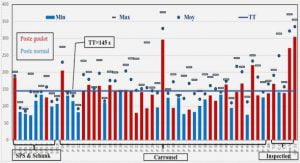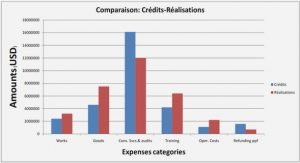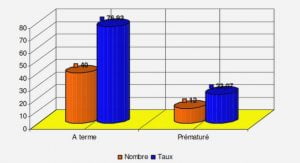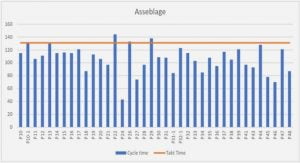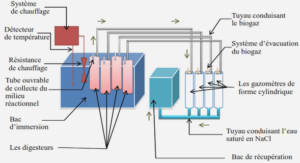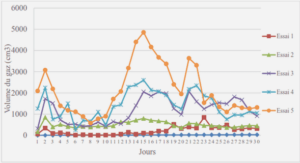Télécharger le fichier pdf d’un mémoire de fin d’études
Safety and reliability analysis of CIs
CIs are witnessing more and more system-level breakdowns, which emerge from small perturbations followed by cascades of failures, which lead to large-scale consequences. CIs are exposed to many types of hazards, such as natural hazards, component aging and failure, sharp load demand increase, climatic changes and intentional attacks. For this reason, Critical Infrastructure Protection (CIP) has gained great importance in all nations, with particular focus being placed traditionally on physical protection and asset hardening.
Then, it is not surprising that CI protection and resilience have become a national and international priority, which calls for vulnerability analysis and CI properties evaluation, for ensuring their protection and resilience (Rigaud and Guarnieri, 2006). To ensure their safe and reliable operation, system analysis, reliability engineering, graph theory and others have been propounded to study the behavior and performance of CIs, also with respect to failure events, protection practice and system resilience (Fang and Zio, 2013a; Limiao et al., 2016; Zio, 2009).
Topological analysis
The fact that CIs are complex networks of interacting components raises the interest in studying their topological characteristics(Fang and Zio, 2013a,b; Lewis et al., 2013; Lu et al., 2016; Ouyang, 2014). In addition, as the CI networks grow in size and complexity, it is extremely di cult, if not infeasible, to perform an analytic description or simulation of the behavior or physical processes of the whole network. The less computationally demanding topological perspective is, therefore, proposed to investigate the network prop-erties.
Topological analysis based on complex network theory can unveil relevant properties of the structure of a networked system (Albert et al., 2000; Strogatz, 2001) and can be used to the analysis of CIs for identifying the role of its components and evaluating the network properties in the presence of failures mainly represented by the removal of nodes and edges (Kroger and Zio, 2011).
A number of recent studies have proposed various measures to evaluate the struc-tural properties of networks and addressed topological investigations to identify criti-cal elements. Among these measures, topological centrality (including degree, closeness, betweenness and information centrality) (Freeman, 1978; Nieminen, 1974) and network e ciency (Latora and Marchiori, 2001) are two important and classical measures, which quantify the importance of individual network elements and evaluate the connectivity of the whole network, respectively.
These topological properties have been studied in relation to the safety and reliability issues of CIs. The authors of (Albert et al., 2004) have investigated the ability of the North American power grid to transfer power between generators and consumers when certain transmission substations are disrupted, and the results show that the system is vulnerable to disturbances a ecting the key transmission substations, while robust to most perturbations. Large interest of considering the topological perspective has ever since been seen in the study of the vulnerability of power grid (Crucitti et al., 2004; Eusgeld et al., 2009; Holmgren, 2006), safety features of urban transport networks (Crucitti et al., 2006; Zio et al., 2008), and nding critical component of Internet (Latora and Marchiori, 2005). These studies show that the structure properties of CIs provide important information which helps understand their global behavior.
However, the insights gained from the topological studies can be limited from the point of view of the description of physical processes and phenomena in the network (Boccaletti et al., 2006). The functioning of some networks like communication networks is less dependent on the physical process for the transfer of information, but the physical process is particularly important in the networks with physical ow, in which the pipeline capacity directly a ects the maximum possible ow passing through it, and component failures (e.g. compressor stations in a gas network) can be critical. Thus, it is important to narrow the gap between the highly conceptualized analysis based on network topology and the highly detailed system physical modeling.
Reliability analysis
Reliability is a fundamental attribute for the safe operation of any modern technological system and the concept of reliability has been used in the context of engineering system for more than 60 years (Zio, 2009). The reliability of an infrastructure system can be de ned as the probability (or the ability, more generally) of the system to provide its 5 services to its customers (Johansson et al., 2013). Reliability analysis is commonly used in the context of CIs. The goal in reliability analysis is to obtain a picture of a system’s likely behavior(Johansson et al., 2013), by quantifying the probability of failure, calculating di erent reliability indices, for example. Given the relationship between the topology of the complex networks and their vulnera-bility and safety features, the association between network structure and system reliability is also of relevance. A common measure of network reliability is the so called k-terminal reliability, which calculates the probability that every two nodes in a speci c subset of K nodes are connected by a path of operational edges (Kelleher, 1991). Of particular interest are the 2-terminal reliability and the all terminal reliability. The former is also known as the st-reliability, which is the probability of successful communication between a speci ed source node and a terminal node in a network, given the probability of success of each link and node in the network. The latter is the probability that the network is fully connected. In the worst case, computing the exact reliability of a network is NP-hard (Shier, 1991).
Given the complexity and scaling issue of CIs, e ective and rapid network reliability analysis methods are required to appropriately address the complexities and to timely calculate system reliability. Network reliability analysis is often performed by simulation-based approaches, typically relying on Monte Carlo simulation strategies. These meth-ods are based on random samples of hazard intensities and the corresponding network component responses. They are suitable for large networks because their computational e ciency depends more on the convergence of probability than the number of network components. The non-simulation-based methods are originally developed for the node pair connectivity analysis of generic networks, including Disjoint Product Technique (DPT) (Yeh, 2007), Binary Decision Diagram (BDD) (Singh et al., 1996), Recursive Decomposi-tion Algorithm (RDA) (Li and He, 2002), Matrix-based System Reliability (MSR) (Song and Kang, 2009), etc. In these methods, analytical insight is sought and guaranteed approximations or bounds are also unraveled despite their high computational complexity.
Their applications can be found in various studies (e.g. (Fang and Zio, 2013a; Helseth and Holen, 2006; Kim and Kang, 2013; Pino et al., 2016; Yeh et al., 2010; Zio and Golea, 2012)).
System safety from control perspective
Control theory provides another angle of viewing the issues of system safety and reliability of CIs. Under a general control perspective, system safety can be framed as a control \problem » (Bakolas and Saleh, 2011; Leveson, 2004; Rasmussen, 1997). Rasmussen’s work has been in uential (Rasmussen, 1997), in which he has mentioned that:\many levels […] are involved in the control of safety by means of laws, rules, and instructions that are formalized means for the ultimate control of some hazardous physical process. » and that \safety depends on the control of work process ». Then, Leveson (Leveson, 2004) expanded and built the system-theoretic accident model and process (or STAMP) model for accident causation and system safety and highlighted that accidents result from inadequate control actions or insu cient enforcement of safety-related constraints on the development, de-sign, and operation of the system, leading to their violation and subsequently to accidents.
Notions from Control Theory, such as controllability and observability, have been introduced in relation to the problem of accident causation and system safety (Saleh et al., 2010). According to Control Theory, a dynamical system is controllable if, by a suitable choice of inputs, it can be driven from any initial state to any desired nal state within nite time (Kalman, 1959; Liu et al., 2011). From system safety perspective, controllability is the ability to guide the system’s behavior towards a safe state through the appropriate choice of a few input variables (Bakolas and Saleh, 2011). Accidents are, therefore, seen as the result of inadequate control or insu cient enforcement of safety-related constraints on the development, design, and operation of the system, leading to their violation and subsequently to accidents(Lussier et al., 2004). In the case of an accident, if the system is controllable, there exists at least one decision/action that could steer the system back to safe operation mode; otherwise, there is no such guarantee.
The e orts poured in developing analysis frameworks of CIs help us to retrieve insights of their behavior and structural and dynamic characteristics. The ultimate proof of our understanding of CIs is re ected in our ability to control them (Liu et al., 2011), which leads us to investigate the controllability of CIs.
Research objectives
The focus of this thesis is to propose a framework integrating the control perspective to complement the analysis of CIs for safety and reliability consideration of CIs. Then, the mission is to retrieve useful information from such multi-perspective analysis in order to guide the design, improvement and protection of CIs.
The research objectives, which represent also the main contributions of this thesis, include: Development and application of a simulation-based framework for CI analysis from di erent perspectives: topology, reliability, controllability.
Consideration of the controllability property of CIs.
Investigation of the relations among di erent system-level indexes.
Identi cation and classi cation of important elements for failure dynamics, with respect to di erent perspectives.
Quanti cation of the consequences of multiple failure scenarios with respect to dif-ferent perspectives.
Three-objective optimization framework for complex CIs design.
Structure of the thesis
This thesis is divided into two parts. The rst part, composed of ve chapters, introduces the research context, describes the problems addressed, presents the approaches developed and applied in this work, discusses some of the results obtained in the case studies and provides general conclusions and some future work perspectives.
Chapter 2 begins with a brief overview of model predictive control. Then, the relevant issues of microgrids, such as their control and safety, are introduced. Case study on a test microgrid is provided, including elaboration of the dynamic modeling and discussion on the simulation results for di erent faulty scenarios.
Chapter 3 proposes a multi-perspective framework of analysis of CIs. It starts with an introduction to the eld of complex network theory and controllability of complex networks. Then, three system-level indexes considered for the analysis of CIs are intro-duced. The case study of a real gas transmission network is presented to demonstrate the analysis of link importance and consequences of failure scenarios by applying the proposed framework.
Chapter 4 focuses on the optimization of CIs design. A three-objective optimization problem is formulated and solved by the non-dominated sorting genetic algorithm II (NSGA-II). A gas transmission network is taken as case study to demonstrate the proposed approach. Relevant results analysis is also presented.
Chapter 5 draws conclusions of this Ph.D work and presents perspectives for future research.
The second part of the thesis includes the collection of three papers submitted or pre-pared for submission, reporting on the outcomes of the work, which the readers can refer to for further details. Papers [1] and [2] presents the multi-perspective analysis framework of CIs under various failure scenarios. Specially, Paper [1] concerns the dynamic modeling and analysis of microgrids characteristics by model predictive control (See Chapter 2 of Part I). Paper [2] proposes a framework of analysis of critical infrastructures (CIs) of larger scale, with the objective of identifying the most critical elements and failure scenarios and evaluating their consequences (See Chapter 3). Paper [3] considers the optimization of complex supply networks design, with respect to the objectives of minimizing the non-supplied demand and their structural complexity, while at the same time maximizing their controllability (See Chapter 4).
|
Table des matières
1 Introduction
1.1 Challenges in the modeling and analysis of CIs
1.1.1 Denition of CIs
1.1.2 Challenges in the modeling and analysis of CIs
1.2 Safety and reliability analysis of CIs
1.2.1 Topological analysis
1.2.2 Reliability analysis
1.2.3 System safety from control perspective
1.3 Research objectives
1.4 Structure of the thesis
2 Model predictive control framework for CI analysis
2.1 Microgrids
2.1.1 Microgrid control
2.1.2 Microgrid safety
2.2 Microgrid modeling and Model predictive control
2.2.1 Dynamic modeling of the microgrid
2.2.2 Model predictive control generalities
2.3 System-level indexes
2.3.1 Supply index (Non-supplied demand)
2.3.2 Controllability Index
2.3.3 System capacity eciency
2.4 Case study
2.4.1 System modeling
2.4.2 Optimization-based control for system safety analysis
2.4.3 Analysis of the results
2.4.4 Summary
3 A multi-perspective framework for the analysis of CIs
3.1 State of the art
3.1.1 CIs as complex networks
3.1.2 Controllability of complex networks
3.2 System-level indexes
3.3 Application
3.3.1 Network description
3.3.2 Quantication of link importance
3.3.3 Simulation and analysis
3.3.4 Summary
4 Multi-objective optimization of CIs
4.1 State of the art
4.1.1 Multi-objective optimization
4.1.2 Evolutionary algorithms for network optimization
4.2 Optimization for CI design
4.2.1 Three system-level indexes considered as optimization objective
4.2.2 Multi-objective optimization problem formulation
4.3 Case study
4.3.1 Correlations among the three objectives
4.3.2 Optimization results
4.3.3 Analysis of node importance
4.3.4 Summary
5 Conclusions and future research
5.1 Conclusions
5.2 Prospective works
References
Télécharger le rapport complet

